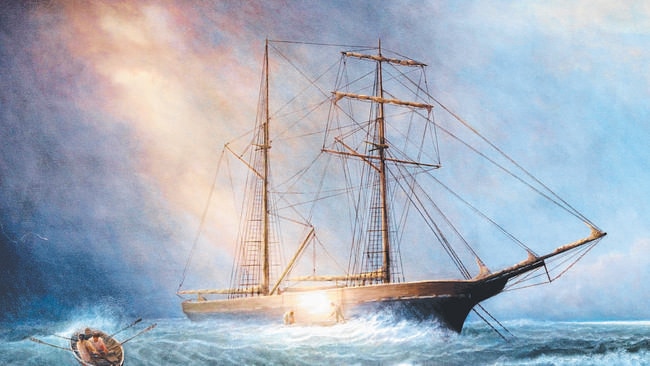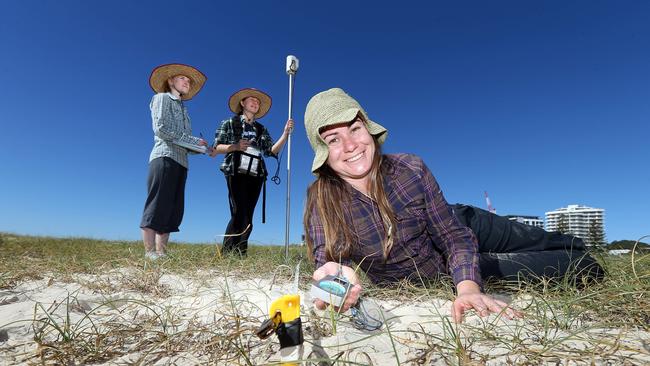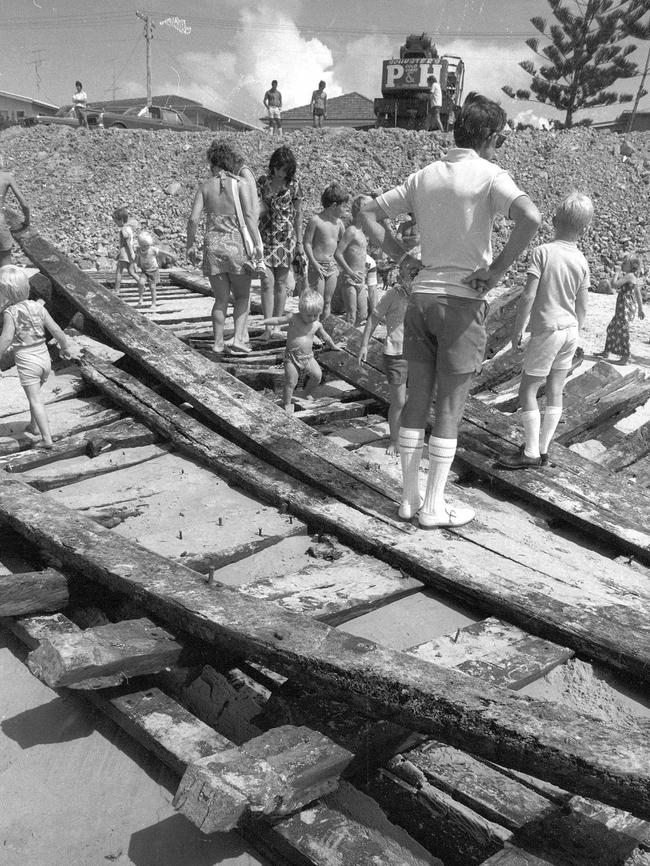Archaeologists and heritage experts intensify search for the wreckage of the Coolangatta that sunk off the suburb of its namesake in the 1800s
CONFIDENCE is growing that the wreckage of the schooner Coolangatta, that sunk in the 1800s, still rests under the sands of Kirra Beach.

Gold Coast
Don't miss out on the headlines from Gold Coast. Followed categories will be added to My News.
CONFIDENCE is growing that the wreckage of the schooner Coolangatta still rests under the sands of Kirra Beach.
The fate of the ship for which the suburb is named, has remained uncertain since it sank in 1846 and archaeologists and heritage experts from Flinders University and Gold Coast City Council are now scouring the iconic beach for any sign of the vessel.
Hi-tech sensors were deployed on Kirra Beach yesterday searching for magnetic anomalies deep under the sand which could be the iron fittings used on the Coolangatta’s hull.

Council heritage co-ordinator Kevin Rains said the historical mystery was a first for the Gold Coast.
“The Coolangatta is such a significant and to definitively find its final resting place would be quite exciting,” he said.
“This stretch of coast was Australia’s shipwreck capital given the number of vessels which crossed through her in the 19th century and to detect the iron which was in its hull would be fantastic.”

On the morning of Wednesday, 19th August 1846, the Coolangatta was torn from her anchors during a severe cyclone and ‘was driven ashore high and dry’ onto Kirra Beach.
The 88-ton vessel had been five weeks at anchor off Point Danger. Being unable to enter the Tweed due to silting of the bar and had been rafting cedar from Greenmount Beach.
Several days before the storm fully developed, Captain Steele and his crew were ashore rafting timber.
Its crew abandoned the vessel just hours before its destruction and eventually returned to Brisbane by foot.
The captain, crew and prisoners reached a pilot station at Amity Point on Stradbroke Island having walked from Point Danger along the beach and made the 70 mile journey in just six
The wreckage was swallowed by the sand and the area was named after it in 1883.
It remained long-forgotten until the remains of a large wooden vessel were uncovered on the beach during the 1974 floods and swept out to sea before eventually washing up at Bilinga where it was ransacked and broken up.
This wreck was previously thought to be the Coolangatta but some now believe it is in fact the Heroine, a schooner built in 1894, just three years before it was wrecked north of Point Danger.
Pieces of the 1974 wreck in the possession of the Gold Coast and Hinterland Historical Society were assessed as part of the new investigation earlier this week.
Among those taking part in the search yesterday was longtime local John Strano who saw a wreckage off Kirra Beach in the early 1970s which may have been the Coolangatta.
“I am confident it is here under the sand and hopefully we will find it here,” the 74-year-old said.
“Kirra has changed a lot since the 1970s but I think there will still be parts under there.”



